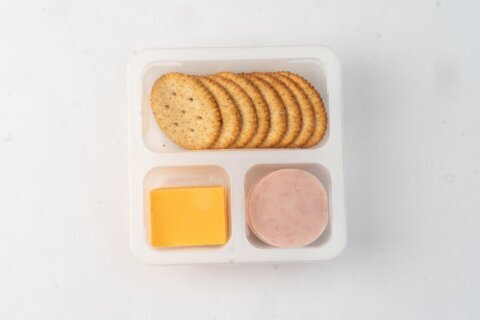Kids sometimes get in trouble for standing in front of the refrigerator with the door open, but parents are guilty of it, too — especially when it’s nearly dinnertime, and nothing is on the menu.
Deciding what’s for dinner is a matter of time (what can be prepared with the time you have), health (what will give your household the best nutrition), availability (what you have on hand) and motivation (how much effort you feel like putting into the meal). When nothing looks appealing or satisfies any one of these factors, it’s easy to opt for carryout, cold cereal or some other mediocre compromise.
“I’ve been making menus for my family off and on for 17 years,” says 45-year old Mindee Myers of Lincoln, Nebraska. Myers has a husband and three children, two of whom are teenagers still living at home. “Initially I did freezer cooking, so I did menus for that. But that got to be a pain, so now I just plan ahead.”
Myers isn’t alone. There’s an online army of meal planners with blogs, apps and printable menus at their fingertips. The motivation to plan an entire month’s worth of menus may differ slightly from family to family, but in general, it boils down to health, cost and convenience.
“I have been meal planning since 2001,” says 34-year old Aset Brathwaite of Snellville, Georgia. Brathwaite is a stay-at-home mother whose husband works as a translator. The couple has eight children, ranging in age from 4 months to 16 years. For her, the process began when she was legally required to plan menus. “At the time, I was operating a family home day care, and we were required by the [U.S. Department of Agriculture] to meal plan for the month.”
A Matter of Convenience
Myers says there are several reasons she’s continued to menu plan, something she does for five weeks at a time using Google Docs. One of those motivations: “to avoid the ‘what do I make for dinner?’ every day. I hate that.”
This seemingly easily resolved conflict is more stressful than you might think. A small study from Flinders University in Australia examined the food duty struggles of working mothers. They found deciding what to make for dinner caused the most stress of any food-related jobs in the house — even more than the actual cooking or providing a healthy diet overall.
“Once it came to cooking, most women could whip something up, but the actual thinking, ‘What on Earth am I going to make for dinner tonight?’ was the most stressful task out of all their food-related activities,” researcher Rachel Roberts said in a press release.
“Understand that 30 minutes of planning, once a month, will save hours of time throughout the month,” Myers says. “It seems miserable to sit down and do the planning, but when you realize the daily time and stress it saves, it’s worth it.”
For Better Health
With 10 people in the home, Brathwaite finds planning for all three meals and two snacks enables her to give her family the healthiest options.
“I am also very health conscious, and meal planning is my way of making sure we are all getting the right amount of nutrients and calories each day,” she says. “There are times when I do not plan and find myself wasting time looking for something to eat or ordering takeout.”
When you plan ahead, you don’t have to piece something together at the last minute, and leaving time for food preparation gives you an opportunity to use fresh produce, lean proteins and whole grains — the building blocks of a healthy meal.
There’s little doubt that cooking from scratch is healthier than eating out or even cooking convenience foods, and at least one study from UCLA showed that opting for convenience foods — such as frozen or boxed dinners — saves no total preparation time over a made-from-scratch meal.
A Money-Saver
Without the last-minute scramble for dinner turning into a fast-food run or pizza night, families also stand to save money. One carryout meal per week for a family of four could cost more than $1,800 each year. That single meal accounts for about 14 percent of a family of four’s estimated weekly meal costs, according to the USDA. And, according to meal planners, you don’t need a coupon binder to see the savings in your grocery budget.
“I don’t scout ads ahead of time because it’s not really possible that many weeks out,” Myers says. “Just having a plan and a list when I go to the store cuts down on unnecessary purchases, eating out and multiple trips to the store. Generally, this helps me stick to one trip a week.”
“It’s also easier to shop with a grocery list,” Brathwaite adds. “I am in the store and out. If I don’t go with a list, it usually takes me hours to shop and I end up spending hundreds more.”
Getting Started
Planning an entire month of meals can seem cumbersome, so consider starting with one week or two, planning for the biggest meal of the day rather than a full day’s menu.
“We have Fish Fridays; on Sundays my husband cooks his Panamanian dishes; and Saturdays we keep it quick and simple,” says Brathwaite, who likes using themes on some nights and trying new recipes on others.
Myers suggests keeping one night unplanned to allow for flexibility.
“If something comes up and we eat out or whatever, I can transfer that night’s meal to the blank night,” she says. “Otherwise that night is for leftovers, or they make themselves something.”
Meal planning isn’t for everyone — spontaneous people need not apply. But when you can set aside the time to prepare, it ensures you’ll always have an answer to the dreaded question: “What’s for dinner?”
More from U.S. News
Healthy Snacks for When You Feel Hangry
8 Ways to Start an Urban Garden
10 Tips for Saving Money on a Plant-Based Diet
What’s for Dinner? Meal Planning for Your Health, Budget and Sanity originally appeared on usnews.com







